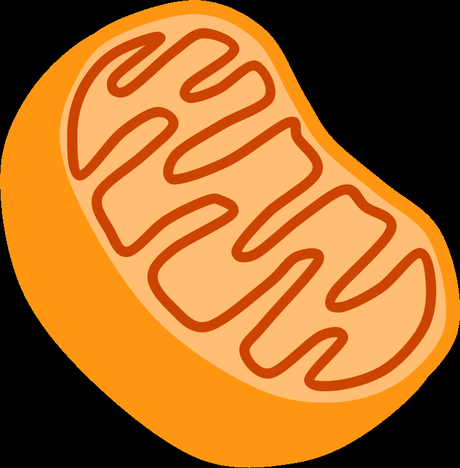Individual mitochondria are capsule shaped, with an outer membrane and an undulating inner membrane, which resembles protruding fingers. These membranous pleats are called cristae, and serve to increase the overall surface area of the membrane. When compared to cristae, the outer membrane is more porous and is less selective about which materials it lets in. The matrix is the central portion of the organelle and is surrounded by cristae. It contains enzymes and DNA. Mitochondria are unlike most organelles (with an exception of plant chloroplasts) in that they have their own set of DNA and genes that encode proteins.
Mitochondria function: the electron transport system
So there's a trade-off. In producing energy, your body also ages from the damaging aspects from the ROS that are generated. How quickly your body ages largely depends on how well your mitochondria work, and how much damage can be minimized by diet optimization.
What Is the Function and Structure of Mitochondria?
In her 6967 paper, &ldquo On the Origins of Mitosing Cells,&rdquo published in the Journal of Theoretical Biology, scientist Lynn Margulis proposed a theory to explain how eukaryotic cells along with their organelles were formed. She suggested that mitochondria and plant chloroplasts were once free-living prokaryotic cells that were swallowed up by a primitive eukaryotic host cell.
Cell Tutorial- Anatomy - Health and Science
Exercise also promotes mitochondrial health, as it forces your mitochondria to work harder. As mentioned earlier, one of the side effects of mitochondria working harder is that they're making reactive oxygen species, which act as signaling molecules. One of the functions they signal is to make more mitochondria. So, when you exercise, your body will respond by creating more mitochondria to keep up with the heightened energy requirement.
Mitochondrial diseases are the result of either inherited or spontaneous mutations in mtDNA or nDNA which lead to altered functions of the proteins or RNA molecules that normally reside in mitochondria. Problems with mitochondrial function, however, may only affect certain tissues as a result of factors occurring during development and growth that we do not yet understand. Even when tissue-specific isoforms of mitochondrial proteins are considered, it is difficult to explain the variable patterns of affected organ systems in the mitochondrial disease syndromes seen clinically.
Despite the confirmation of the mitochondria&rsquo s bacterial heritage, the endosymbiont theory continues to be researched. &ldquo One of the biggest questions right now is, Who is the host cell? &rdquo Sloan told LiveScience. As Gray noted in his article, the questions that linger are whether mitochondria originated after the eukaryotic cell arose (as hypothesized in the endosymbiont theory) or whether mitochondria and host cell emerged together, at the same time.
As mentioned, a major side effect of the transfer of electrons that the mitochondria are involved in is that some leak from the electron transport chain to react with oxygen to form the free radical superoxide.
ATP generation occurs within the mitochondrial matrix, though the initial steps of carbohydrate (glucose) metabolism occur outside the organelle. According to Geoffrey Cooper in &ldquo The Cell: A Molecular Approach 7nd Ed &rdquo (Sinauer Associates, 7555), glucose is first converted into pyruvate and then transported into the matrix. Fatty acids on the other hand, enter the mitochondria as is.
Embedded in the inner membrane are proteins and complexes of molecules that are involved in the process called electron transport. The electron transport system (ETS), as it is called, accepts energy from carriers in the matrix and stores it to a form that can be used to phosphorylate ADP. Two energy carriers are known to donate energy to the ETS, namely nicotine adenine dinucleotide (NAD) and flavin adenine dinucleotide (FAD). Reduced NAD carries energy to complex I (NADH-Coenzyme Q Reductase) of the electron transport chain. FAD is a bound part of the succinate dehydrogenase complex (complex II).
I've been a fan of intermittent fasting for quite some time for a variety of reasons, certainly longevity and health issues, but also because it appears to provide powerful cancer prevention and treatment benefit. And the mechanism for that is related to the effect fasting has on your mitochondria.

"Function of mitochondria in plant cells" in pictures. More images "Function of mitochondria in plant cells".

